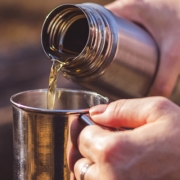What is Mycotoxicosis?
Mycotoxins are secondary metabolites produced by microfungi that are capable of causing disease and death in humans and other animals. Growth of fungi on animal hosts produces the diseases collectively called mycoses, while dietary, respiratory, dermal, and other exposures to toxic fungal metabolites produce the diseases collectively called mycotoxicoses.
Mycoses range from merely annoying (e.g., athlete’s foot) to life-threatening (e.g., invasive aspergillosis). The fungi that cause mycoses can be divided into two categories:
- Primary pathogens (e.g., Coccidioides immitis and Histoplasma capsulatum). Primary pathogens affect otherwise healthy individuals with normal immune systems.
- Opportunistic pathogens (e.g., Aspergillus fumigatus and Candida albicans). Opportunistic pathogens produce illness by taking advantage of debilitated or immunocompromised hosts. The majority of human mycoses are caused by opportunistic fungi.
The mechanisms of pathogenesis of both primary and opportunistic fungi are complex, and medical mycologists have devoted considerable research energy trying to identify the factors that distinguish fungal pathogens from other species. Some infections remain localized, while others progress to systemic infection. For many mycoses, the ordinary portal of entry is through the pulmonary tract, but direct inoculation through skin contact is not uncommon.
In contrast to mycoses, mycotoxicoses are examples of “poisoning by natural means” and thus are analogous to the pathologies caused by exposure to pesticides or heavy metal residues. The symptoms of a mycotoxicosis depend on the type of mycotoxin; the amount and duration of the exposure; the age, health, and sex of the exposed individual; and many poorly understood synergistic effects involving genetics, dietary status, and interactions with other toxic insults.
Thus, the severity of mycotoxin poisoning can be compounded by factors such as vitamin deficiency, caloric deprivation, alcohol abuse, and infectious disease status. In turn, mycotoxicoses can heighten vulnerability to microbial diseases, worsen the effects of malnutrition, and interact synergistically with other toxins.
The number of people affected by mycoses and mycotoxicoses is unknown. Although the total number affected is believed to be smaller than the number afflicted with bacterial, protozoan, and viral infections, fungal diseases are nevertheless a serious international health problem.
Mycoses caused by opportunistic pathogens are largely diseases of the developed world, usually occurring in patients whose immune systems have been compromised by advanced medical treatment. Mycotoxicoses, in contrast, are more common in underdeveloped nations. One of the characteristics shared by mycoses and mycotoxicoses is that neither category of illness is generally communicable from person to person.



 lehighvalleylive.com
lehighvalleylive.com 



